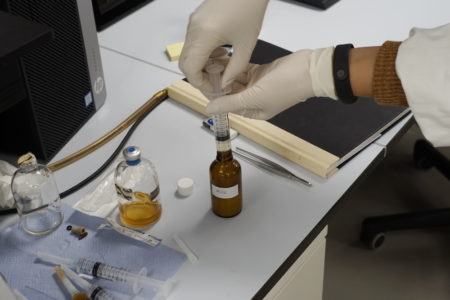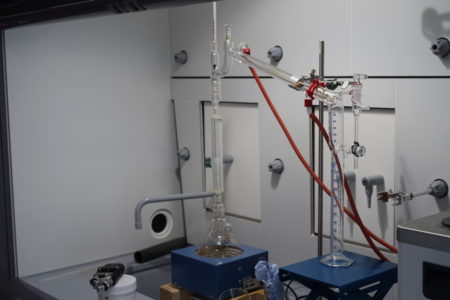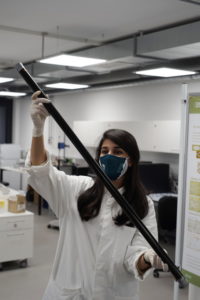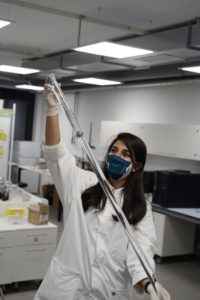Experiment V, Leoben, 1-2 October 2020
Ernst Logar together with Karez Abdulhameed, Patrick Jasek, Rene Ritter and Ahmad Kharrat of the Department Petroleum Engineering conducted three experiments in parallel: a microfluidic chip experiment, and experiments in distillation and viscosity.
Microfluidics analyses the behaviour of fluids on a small scale. One of the main motivations of the microfluidic chip experiments was to connect culturally significant fluids to crude oil. Firstly milk was injected into a chip and then crude oil, resulting in the oil displacing the milk. This experiment was then repeated using honey and Coca-Cola, followed by crude oil. In each case the colour of the substances changed. The milk turned lighter with little fat particles in it, while honey and Coca-Cola became transparent. The crude oil turned yellow.
Meanwhile a fractional distillation system was set up and the fractional flask filled with crude oil. In fractional distillation a mixture is separated into its component parts, or fractions, by heating it to a temperature at which one or more fractions will vaporize. The oil was then heated and four samples from different temperature ranges – 20 to 40 degrees Celsius, 40 to 60, 60 to 90 and 90 to 200 – collected.
The samples represent roughly the industrial implications of the lighter range of crude oil fractions, petrol, naphtha, and kerosene, and had a range of smell intensity. The first samples smelled very light compared to the last one which smelled very strong.
For the third experiment a viscosimeter was constructed using an acrylic stick with water and one with crude oil. The intention behind this experiment was to connect the abstract value of viscosity with bodily experience of viscosity.
Leoben I experiments I microfluidics I distillation I viscosity I milk I honey I smell










